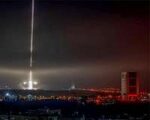Astroscale and HEO Robotics have entered a strategic partnership aimed at enhancing space domain awareness (SDA) for allied nations. By combining Astroscale’s in-orbit servicing capabilities with HEO’s unique non-Earth imaging (NEI) technologies, the collaboration promises to deliver persistent monitoring of objects in low Earth orbit (LEO) and geostationary orbit (GEO). This development reflects growing demand among Western militaries for real-time intelligence on adversarial satellite behavior in contested orbital regimes.
Strategic Context: SDA as a Pillar of Modern Defense
Space domain awareness has become a critical enabler of both strategic deterrence and operational effectiveness. As rival powers such as China and Russia expand their counterspace capabilities—including co-orbital ASATs, electronic warfare payloads in orbit, and maneuverable inspection satellites—NATO-aligned nations are investing heavily in persistent surveillance of orbital assets.
The UK’s Defence Space Strategy (2022) explicitly prioritizes SDA as a core mission area. Similarly, the U.S. Department of Defense has emphasized SDA within its Joint All-Domain Command and Control (JADC2) framework. In this context, commercial partnerships like Astroscale-HEO offer rapid capability insertion without the long lead times associated with traditional military procurement cycles.
Partnership Details: Merging On-Orbit Servicing with NEI
The collaboration leverages Astroscale’s experience in rendezvous proximity operations (RPO), debris removal missions such as ELSA-d/ELSA-M, and its modular docking plate technology. These capabilities enable precision tracking and servicing of resident space objects (RSOs), including defunct satellites or potentially hostile spacecraft.
HEO Robotics contributes its proprietary NEI platform that uses sensors onboard third-party satellites to image other spacecraft from unique vantage points—offering high-resolution visual intelligence without deploying dedicated assets. Their software-as-a-service model allows near-real-time tasking via API integration or dashboard interface.
- Astroscale: Specializes in on-orbit servicing, debris mitigation, RPO
- HEO Robotics: Provides satellite-to-satellite imaging using NEI techniques
- Joint Offering: Aim to deliver persistent GEO/LEO monitoring with scalable commercial architecture
Operational Use Cases for Allied Militaries
The joint Astroscale-HEO solution is designed to support multiple defense applications:
- Anomaly resolution: Visual confirmation of satellite malfunctions or unannounced maneuvers
- Tactical warning: Detection of proximity operations by adversarial spacecraft near critical national assets
- SATINT/SIGINT fusion: Integration with RF geolocation or laser ranging data to enrich orbital intelligence products
- Treaty verification: Support arms control compliance by confirming declared satellite deployments or deactivations
This aligns closely with NATO’s evolving doctrine on multi-domain ISR integration. By enabling near-persistent surveillance outside traditional ground-based radar coverage zones—especially in GEO—the system fills critical gaps in existing SDA architectures.
Pilot Programs Underway with UK Space Command
The UK Ministry of Defence has already initiated pilot projects under the Defence Innovation Unit framework to evaluate these capabilities. According to public statements from both companies at the DSEI 2023 expo in London, early trials have demonstrated successful detection of uncooperative targets at altitudes exceeding 36,000 km.
This effort complements other UK-led initiatives such as Project Oberon—a constellation of small satellites aimed at sovereign SDA—and partnerships with Five Eyes allies under Combined Space Operations (CSpO). The Astroscale-HEO offering is seen as a fast-track option while indigenous constellations are still years away from operational status.
The Commercial ISR Model Goes Orbital
This partnership reflects a broader trend toward commercialization of traditionally military-only domains. Just as synthetic aperture radar (SAR) imagery providers like ICEYE or Capella have disrupted Earth observation markets by offering tactical ISR-as-a-service models for Ukraine and others during wartime operations, Astroscale-HEO aims to do the same for orbital intelligence.
Their approach offers several advantages:
- No need for sovereign launch capacity: Imaging is done from hosted payloads or third-party platforms already in orbit
- Rapid revisit rates: Especially useful during periods of heightened alert or anti-satellite test activity
- Simplified procurement: Allies can subscribe via service contracts rather than full system acquisition programs
SDA Technology Race Accelerates Globally
This initiative places Astroscale-HEO within a competitive global field that includes U.S.-based ExoAnalytic Solutions and LeoLabs; France’s ArianeGroup; Australia’s Saber Astronautics; Japan’s iQPS; and government-led programs like the U.S. Space Force’s Deep Space Advanced Radar Capability (DARC).
A key differentiator is that Astroscale brings active maneuvering capability—not just passive sensing—into play. This opens doors not only for monitoring but also potential counterspace deterrence missions such as shadowing suspicious satellites or executing close approaches under ROE constraints.
Future Outlook: Toward Autonomous Orbital Sensing Constellations?
The roadmap ahead may involve deploying dedicated sensor platforms equipped with AI-enabled onboard processing to autonomously classify satellite behavior patterns—a concept aligned with DARPA’s Blackjack program goals or ESA’s AI4SDA initiatives.
If successful at scale, this could enable real-time threat detection across all orbital regimes—from LEO megaconstellations to cislunar space—without human-in-the-loop delays. For now, however, hybrid models like Astroscale-HEO offer an agile bridge between legacy ground-based tracking systems and next-gen space-native ISR architectures.








